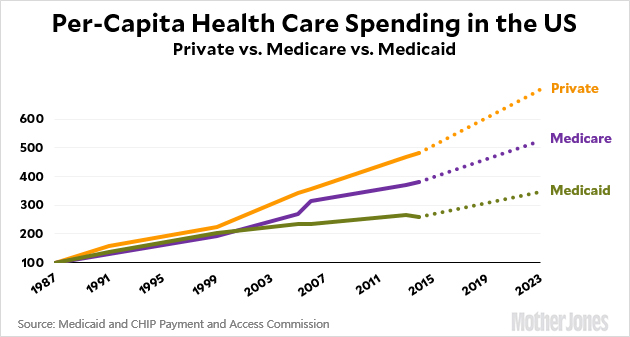I got into a conversation today about my contention from last night that national health care systems are better at controlling costs than the private sector. We all know that US health care costs are the highest in the world, but are they growing faster than the rest of the world? And how about different health care sectors in the US?
I haven’t looked at this in years, so I decided to dig up the data and see. First off, here is growth in health care spending among a representative group of rich countries during recent decades:

This data is a little tricky because some countries changed the way they calculated health care spending in the past few years. I didn’t use any of them, and it’s possible that one or two might have grown faster than us. But the US is certainly in the top two or three, if not at the very top.
One problem with international comparisons of health care spending is that some countries are aging faster than others, and it stands to reason that countries with older populations will spend more than those with younger populations. Here’s a look at spending growth during the period 1970-2002 that controls for aging:

During these earlier decades there are several countries with higher growth rates than the US. I’m a little surprised there weren’t more, given that postwar European countries were still catching up to the US during the first half of this period.
Finally, here’s a comparison of growth rates just within the US:

The data here tells a pretty consistent story. Despite starting at a higher base, the US is in the top two or three in the world—maybe at the very top—for health care spending growth over the past half century or so. Within the US, private health care spending growth has outpaced both Medicare and Medicaid. Both internationally and in the US, government-run health care programs appear to be better at controlling costs than the private sector.
Of course, there are other sources of data and other ways of doing comparisons, so don’t take this as the last word. If I come across any other studies that seem to have interesting ways of slicing the data, I’ll follow up.

















